Welcome to Quedlinburg! Here you’ll find a charming German gem brimming with half-timbered houses, cobblestone streets, and centuries of vibrant history. Most visitors search for a Quedlinburg travel guide to learn about the top things to do in town. They want to know where to eat, what to see, and how to maximize their time in this UNESCO World Heritage Site. They’re also seeking practical tips: how to navigate the area, where to stay, and which tours are worth taking.
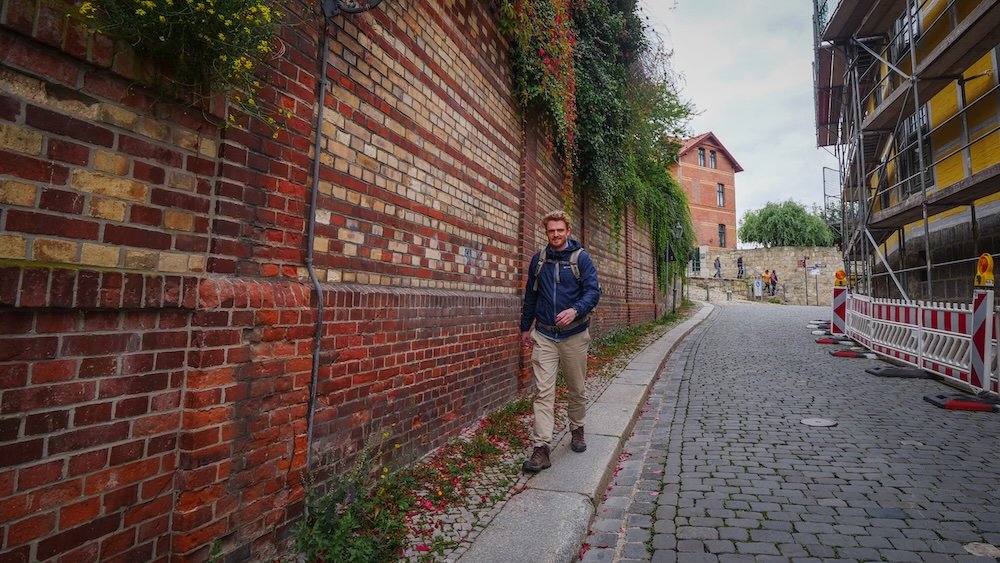
If you fall into this category, you’re in the right place. We’ll make sure you leave with a clear plan. This guide will present detailed information, ensuring every potential question is answered.
Our Travel Video From Quedlinburg on Samuel and Audrey YouTube Channel (Nomadic Samuel + That Backpacker hosting)
Why Quedlinburg?
Planning a trip can be stressful. You might worry about missing out on important attractions or overspending on accommodations. Sometimes, it’s tough to filter through conflicting online reviews. Or maybe you’re concerned about transportation—like how to get there from major German cities. We understand these headaches.
This guide is for the curious adventurer, the history buff, the casual traveler, and the comfort-seeker. Whether you’re on a whirlwind European trip or planning a relaxed weekend in a serene corner of Germany, Quedlinburg appeals to many tastes. Perhaps you love old architecture and want to photograph every historic façade. Or maybe you just want to immerse yourself in a slower pace of life.
Quedlinburg is the type of place where a stroll can feel like stepping back in time. Ready for a closer look? Let’s dive in.
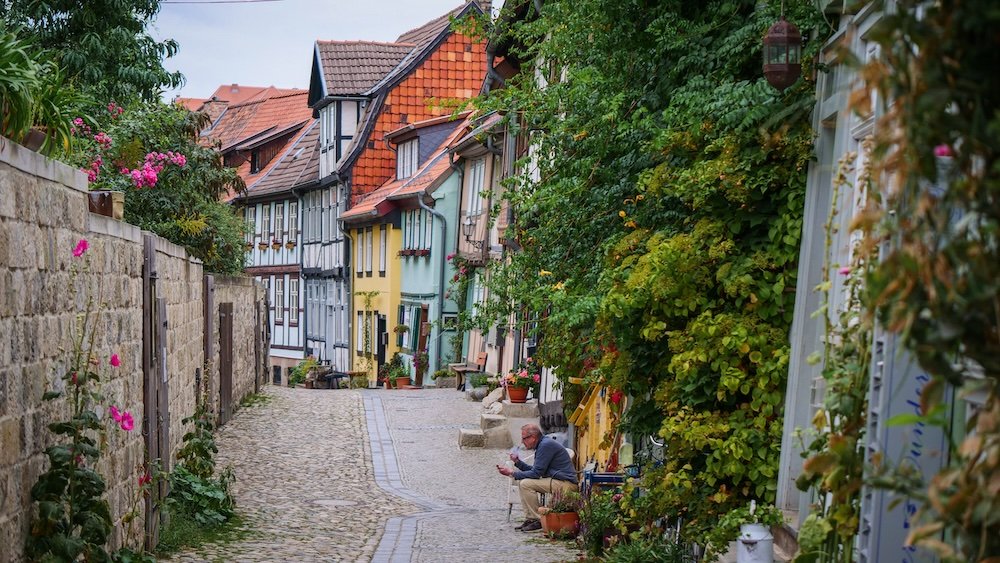
Top 15 Things To Do in Quedlinburg, Germany For Visitors
Quedlinburg is a picturesque location that offers a wealth of activities, sights, and cultural experiences. Below, you’ll discover 15 must-see spots and experiences:
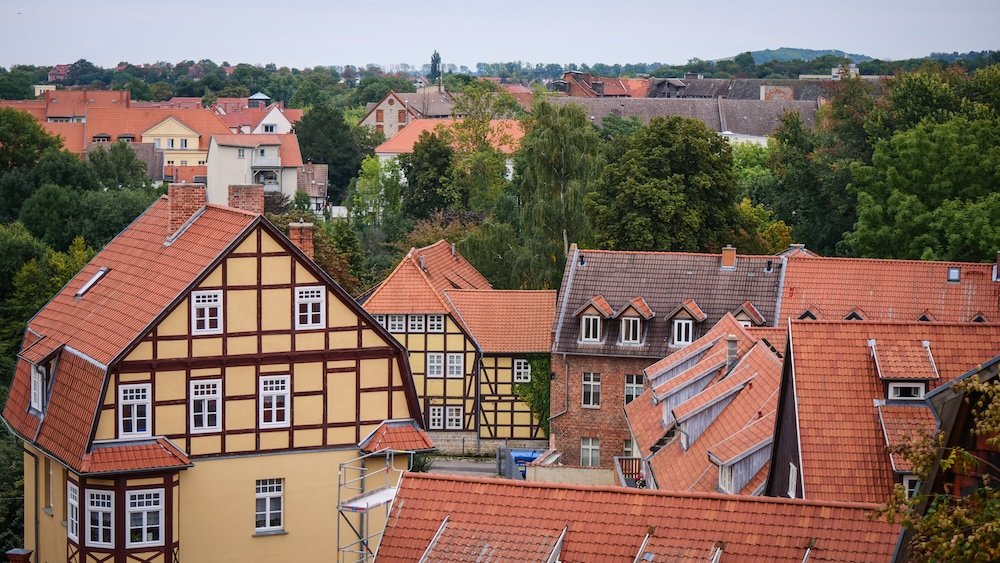
1. Old Town
Quedlinburg’s Old Town is the heart and soul of this historic enclave. Its narrow, winding alleys and half-timbered houses create an enchanting atmosphere that feels straight out of a fairy tale. You’ll love the colorful facades, each with a unique story that reflects centuries of heritage. Visitors often spend hours strolling these cobblestone streets, soaking in the architecture and popping into quaint shops. The relaxed vibe is a welcome change from big cities, offering a slow-paced travel experience. No matter where you turn, there’s a postcard-perfect view waiting to be photographed.
- Highlights of Old Town: Over 1,300 half-timbered structures, cozy cafes, small local museums.
- Best Time to Visit: Early morning for fewer crowds and stunning light.
- Must-See Landmark: The Town Hall on the Marktplatz with its ivy-covered walls.
Tip: Wear comfortable shoes because the cobblestone streets, while charming, can be tough on your feet.
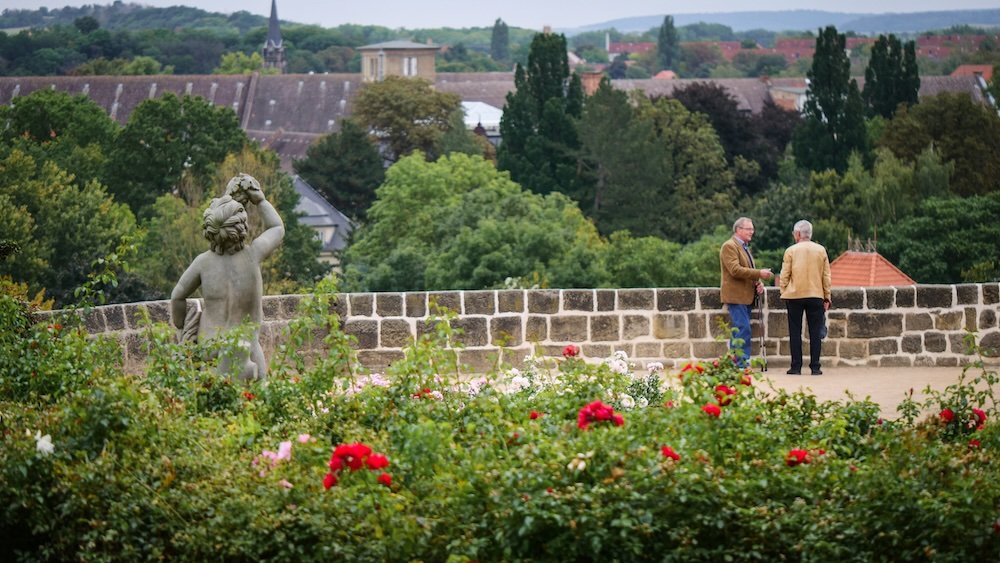
2. Views from Schlossgarten / Castle Garden
Perched above the town, the Schlossgarten offers panoramic views that redefine breathtaking. You’ll see terracotta rooftops sprawling into the distance, framed by rolling hills. It’s a quick climb to the top, but worth every step. The garden itself is peaceful, dotted with benches perfect for a moment of reflection. Many travelers find this spot ideal for photographs and quiet contemplation. Watching the sunset here feels like a cinematic experience.
- What to Expect: Well-maintained lawns, a calm atmosphere, and sweeping vistas.
- Photo Tip: Aim your camera during golden hour for warm, magical lighting.
- Nearby Attraction: The Quedlinburg Castle and its museum are just steps away.
Tip: Bring a light jacket as the wind on higher ground can be chilly, even in summer.
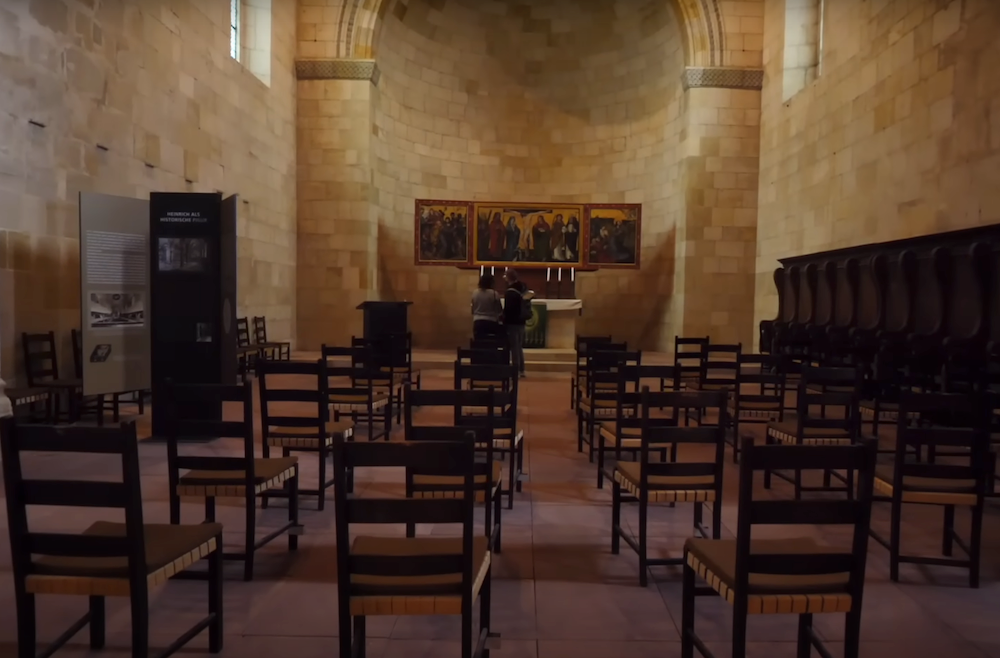
3. Church of St. Servatius
The Church of St. Servatius is a masterpiece of Romanesque architecture that stands proudly in Quedlinburg. Its imposing structure speaks volumes about the town’s religious and historical significance. Stepping inside, you’ll be surrounded by soaring arches and an air of reverence. The church houses a treasury with precious artifacts, so be sure to allocate time for that. Outside, the tranquil courtyard offers another stunning perspective of this grand edifice. You’ll leave feeling humbled by the centuries of faith and artistry that went into creating this site.
- Architectural Style: Romanesque with later Gothic additions.
- Treasury Highlights: Medieval manuscripts, gold-embellished relics, and ancient liturgical items.
- Admission: There may be a small fee for the treasury.
Tip: Check for special events like organ concerts, which add a mystical ambiance to your visit.
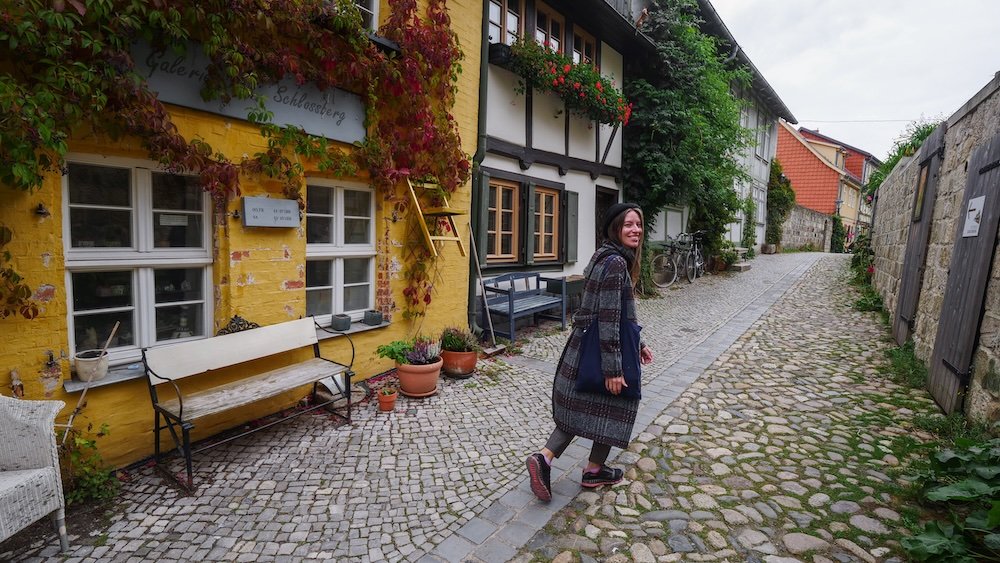
4. Guided Architectural Walking Tour
An architectural walking tour is the best way to appreciate Quedlinburg’s structural heritage. Local guides bring stories of master builders, noble families, and everyday tradespeople to life. You’ll notice nuances in building techniques, colors, and decorative motifs that might go unseen if you explore solo. These tours often include insider anecdotes and lesser-known sites. In just a couple of hours, you’ll gain a deeper sense of Quedlinburg’s identity. It’s a fantastic way to immerse yourself in local culture without simply “checking the boxes.”
- Duration: Typically lasts two hours, but some shorter or longer options exist.
- Language Availability: Tours often offered in English and German.
- Starting Point: Many depart from the main square or outside the tourist information center.
Tip: Book in advance during peak season to secure your spot on popular tours.
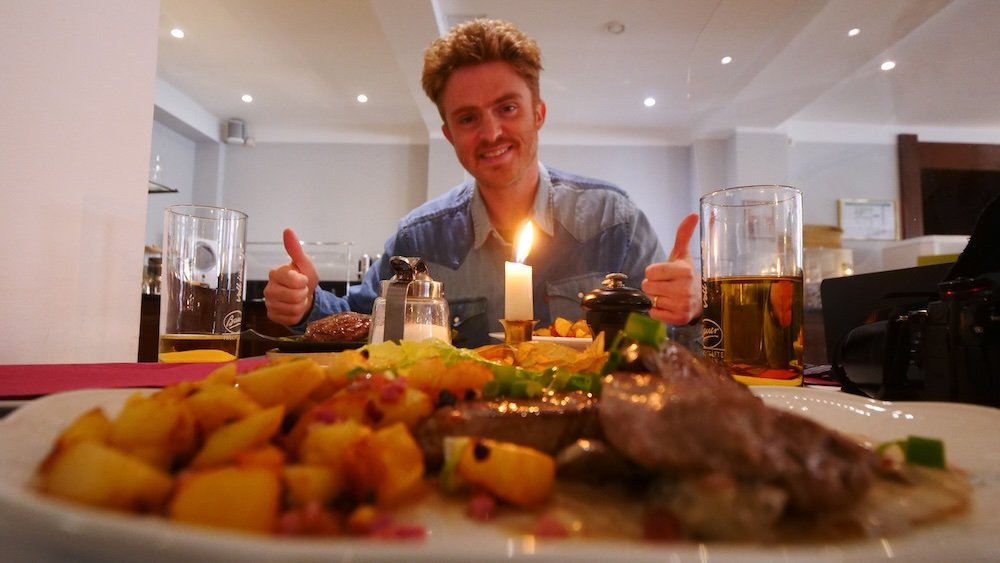
5. Lunch at Hotel zum Bär
Hotel zum Bär is a favorite lunch spot among both visitors and locals. The welcoming atmosphere pairs perfectly with a menu that highlights regional specialties. You can expect hearty dishes, fresh ingredients, and a taste of German hospitality. Portions are generous, so come hungry. The historic building adds a layer of charm to your meal. It’s more than just a dining stop—it’s an experience in the heart of Old Town.
- Menu Must-Try: The schnitzel with seasonal sides.
- Ambiance: Rustic yet refined, with warm interior decor.
- Location: Conveniently near main attractions, perfect for a midday break.
Tip: Reserve a table if you’re visiting during lunch rush to avoid waiting.
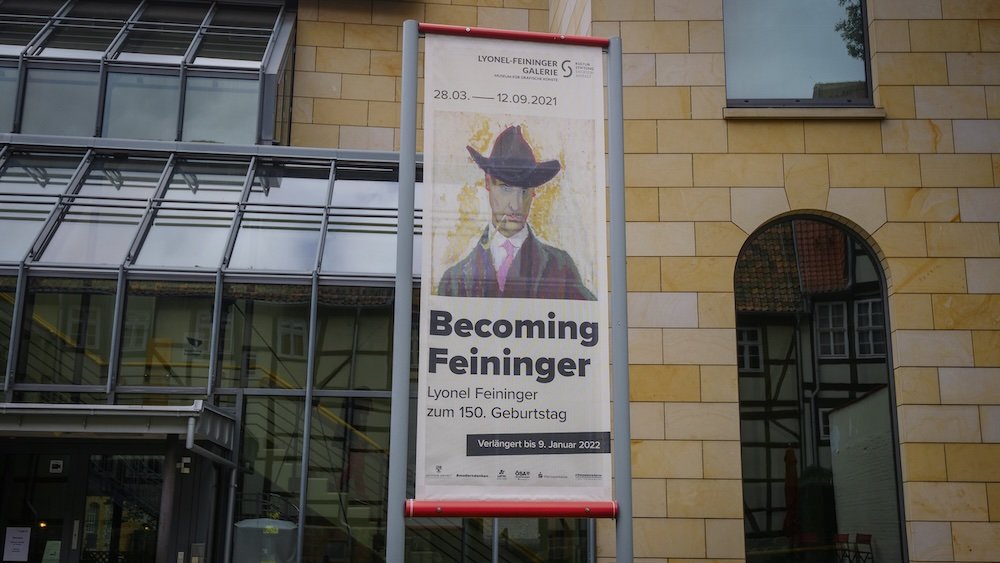
6. Lyonel Feininger Gallery
The Lyonel Feininger Gallery celebrates the works of the famed German-American artist whose modernist style influenced the early 20th century. Inside, you’ll find a carefully curated collection of paintings, drawings, and prints that showcase Feininger’s evolving creative journey. Exhibits often rotate, so there’s always something new to discover. Even if you’re not an art connoisseur, the gallery’s layout and educational plaques make the experience accessible. The quiet setting provides a nice contrast to the bustling streets outside. It’s a moment of calm and reflection in a visually stimulating environment.
- Highlight: Feininger’s unique depiction of local architecture in his artwork.
- Gallery Store: Offers prints, books, and souvenirs related to the artist.
- Admission: Fees vary, but discounted rates for students and seniors are common.
Tip: Check the event calendar for special workshops or guided tours that enhance your visit.
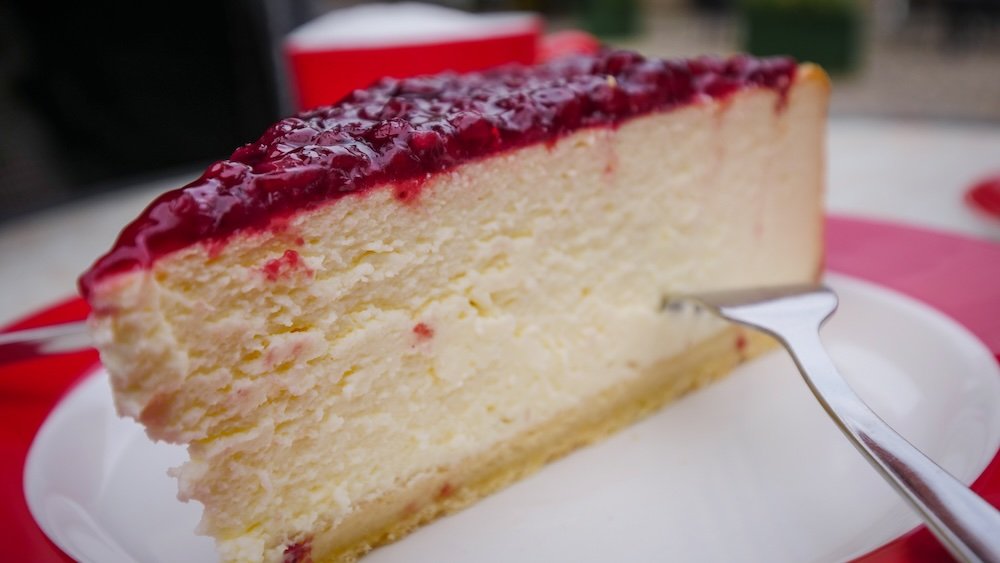
7. Cafe Vincent for Cheesecake
Cafe Vincent is a paradise for dessert lovers, particularly if you adore cheesecake. The aroma of freshly brewed coffee and sweet pastries greets you at the door. Their cheesecakes come in various flavors, from classic to seasonal specials. Locals swear by the creamy texture and subtle sweetness that melts in your mouth. The cafe itself has a cozy, laid-back vibe, making it an ideal spot for a leisurely afternoon break. Whether you’re a fan of coffee, tea, or hot chocolate, you’ll find the perfect accompaniment to your slice of cake.
- Seating: Limited indoor space, plus a few outdoor tables.
- Best Pairing: Try the raspberry cheesecake with a cappuccino.
- Pricing: Reasonably mid-range, but worth every euro.
Tip: Arrive during off-peak hours to snag a table without a long wait, especially on weekends.
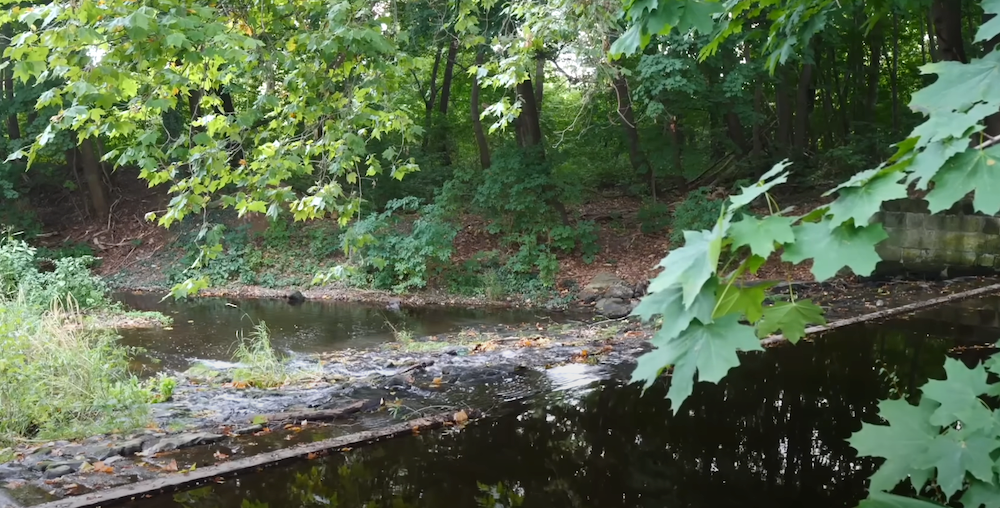
8. Gartenträume and Villas
Quedlinburg’s Gartenträume (Garden Dreams) network highlights beautifully maintained gardens and villas that evoke a different era. Wandering these lush green spaces is both relaxing and enlightening. Some villas open their doors to visitors, offering glimpses of historic interiors. These gardens also serve as venues for seasonal events like flower festivals or music performances. It’s a hidden slice of Quedlinburg that many travelers overlook, yet it provides a deeper appreciation for local culture. Each pathway feels like an invitation to step back in time and savor a slower pace of life.
- Key Garden: Brühlpark, known for its landscaped beauty.
- Villa Tours: Check schedules in advance; some require prior booking.
- Seasonal Blooms: Visit in spring or early summer for the best floral displays.
Tip: Carry a camera because the combination of historic villas and vibrant gardens is photogenic from every angle.
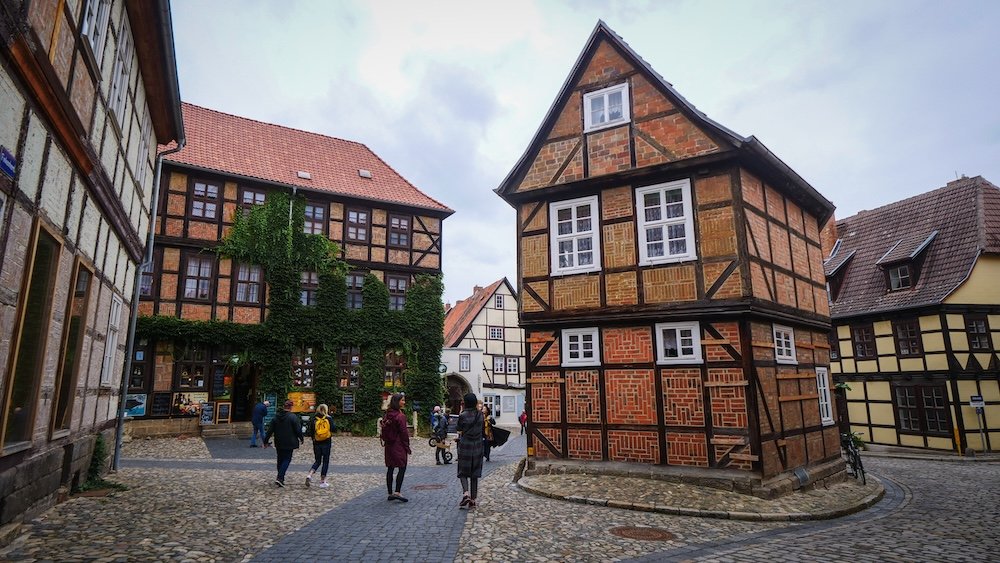
9. Quedlinburg Market Square (Marktplatz)
The Marktplatz is the social and historical epicenter of Quedlinburg. It’s surrounded by well-preserved buildings, including the Town Hall, and bustles with activity year-round. Morning markets sometimes pop up, offering fresh produce, flowers, and local crafts. You’ll often see street musicians or small festivals adding to the lively atmosphere. Many cafés and restaurants face the square, giving you the chance to people-watch while sipping a hot drink. It’s an ideal spot to pause and soak in the everyday charm of the town.
- Highlight: The ivy-covered Town Hall, iconic in many postcards.
- Best Time: Late afternoon when the sun casts a golden glow on the facades.
- Local Finds: Handmade souvenirs and seasonal treats at pop-up stands.
Tip: Ask about upcoming events at the tourist info center located nearby; you might catch a special celebration.
10. Explore the Quedlinburg Christmas Market (Seasonal)
If you’re here in December, the Quedlinburg Christmas Market is a must. The town glitters with festive lights, and the scent of mulled wine fills the air. Stalls selling crafts, ornaments, and local delicacies line the square. Choirs sing carols, and it feels like you’re walking in a real-life snow globe. Even if it’s chilly, the warm spirit is undeniably comforting. This seasonal event alone can make your things to do list feel complete.
- Top Treat: Warm spiced Glühwein (mulled wine).
- Family-Friendly: Kids love the carousels and festive performances.
- Unique Souvenir: Locally made wooden ornaments for your holiday tree.
Tip: Bundle up because temperatures can drop significantly after sunset.
11. Strolling Along the River Bode
For a peaceful escape, take a stroll along the River Bode. The gentle sound of flowing water accompanies you as you move past weeping willows and quaint bridges. You’ll find pockets of greenery perfect for a short rest or a scenic picnic. Birdwatchers can spot ducks and other waterfowl gliding gracefully. It’s a refreshing change of pace from the denser Old Town areas. The riverbank walk adds a natural dimension to your Quedlinburg experience.
- Length: Several accessible walking paths, varying in distance.
- Ideal Time: Early morning or late afternoon for a serene atmosphere.
- Pet-Friendly: Many locals walk their dogs here, so it’s a laid-back, inclusive area.
Tip: Carry some snacks to enjoy a mini-picnic, especially if you stumble upon a scenic bench by the water.
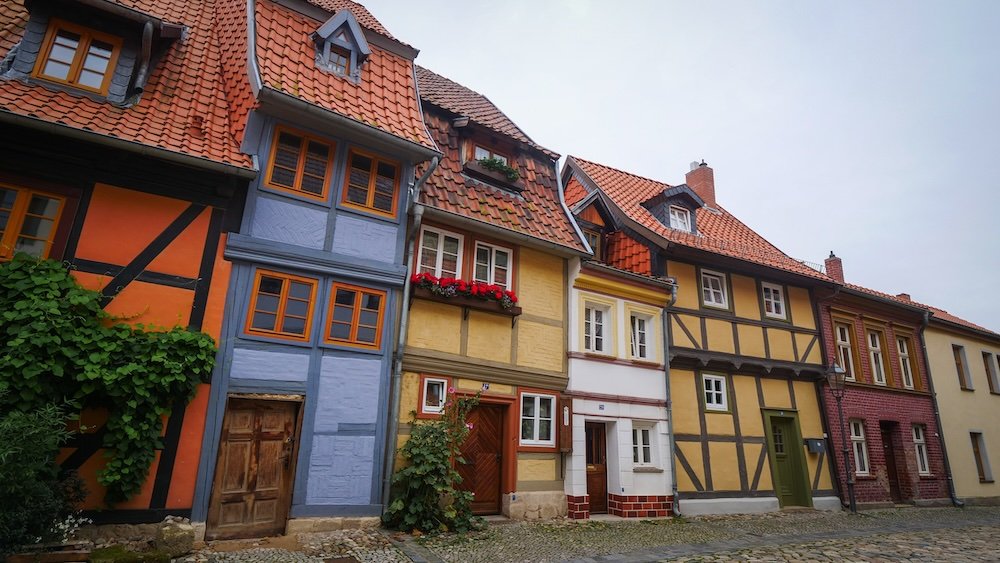
12. Museums in Half-Timbered Houses
Quedlinburg boasts museums housed in centuries-old half-timbered buildings, offering a fusion of architecture and culture. Each museum tells a slice of the town’s history, from medieval craftsmanship to modern-day arts. The interiors often retain original wooden beams and rustic details, making your visit feel like stepping into another time. Exhibits vary, so it’s wise to check which ones align with your interests. Some focus on daily life in medieval Quedlinburg, while others delve deeper into regional art or trades. You’ll appreciate the intimate setting these smaller museums provide.
- Popular Pick: Klopstock Museum, dedicated to the famous German poet.
- Interactive Displays: Some museums include multimedia exhibits for kids.
- Language Support: Brochures and audio guides may be available in English.
Tip: Combine museum visits with your architectural walking tour for a fuller historical context.
13. Bike Ride into Surrounding Countryside
Renting a bike and venturing into the rolling fields around Quedlinburg is a delightful way to expand your experience. You’ll pedal through scenic landscapes, passing by small villages that capture the essence of rural Germany. The fresh air and open roads offer a sense of freedom, quite different from walking the town’s cobblestone streets. Routes vary from easy to moderate, so you can choose according to your fitness level. You might discover hidden viewpoints or local eateries that rarely appear in standard travel guides. It’s an active, enriching activity that gives you a broader view of the region.
- Rental Options: Local bike shops and some hotels provide hourly or daily rates.
- Safety: Wear a helmet and follow local cycling rules.
- Bring a Map: Cell service can be spotty in rural areas, so having a physical map helps.
Tip: Pack water and snacks because rest stops might be few and far between on lesser-traveled paths.
14. Quedlinburg Brewery Visit
German beer culture is legendary, and Quedlinburg doesn’t disappoint if you can find a local brewery or microbrewery tour. You’ll learn about traditional brewing methods and get a taste of freshly crafted ales. Some places even offer pairing menus with regional dishes. The vibe is friendly and communal, a perfect way to meet fellow travelers or chat with locals. Tours often conclude with a relaxed tasting session, letting you savor flavors unique to the region. It’s a fun, flavorful break from typical sightseeing.
- Focus: Quality over quantity, with small-batch brews taking center stage.
- Scheduling: Tours may require advance booking, especially on weekends.
- Non-Beer Options: Some breweries also produce craft sodas or seasonal beverages.
Tip: Ask your server about special or limited-edition beers for an authentic local find.
15. Sunset at Münzenberg
End your day by climbing to Münzenberg, a hill opposite the castle that provides a stunning sunset panorama. Small, historic houses cluster here, offering a quiet atmosphere away from the main tourist routes. As the sun dips low, the sky floods with warm hues that illuminate Quedlinburg’s skyline. The ambiance is romantic, ideal for couples or anyone seeking a reflective moment. The vantage point lets you see the interplay of light and shadow across the medieval rooftops. It’s a serene finale to any day of exploration.
- Accessibility: The path can be steep, so wear sturdy shoes.
- Photography: Bring a tripod if you’re serious about capturing dusk shots.
- Quiet Charm: Fewer crowds here than at Castle Hill, so it feels more intimate.
Tip: Arrive 30 minutes before sunset to secure a good spot and watch the colors evolve.
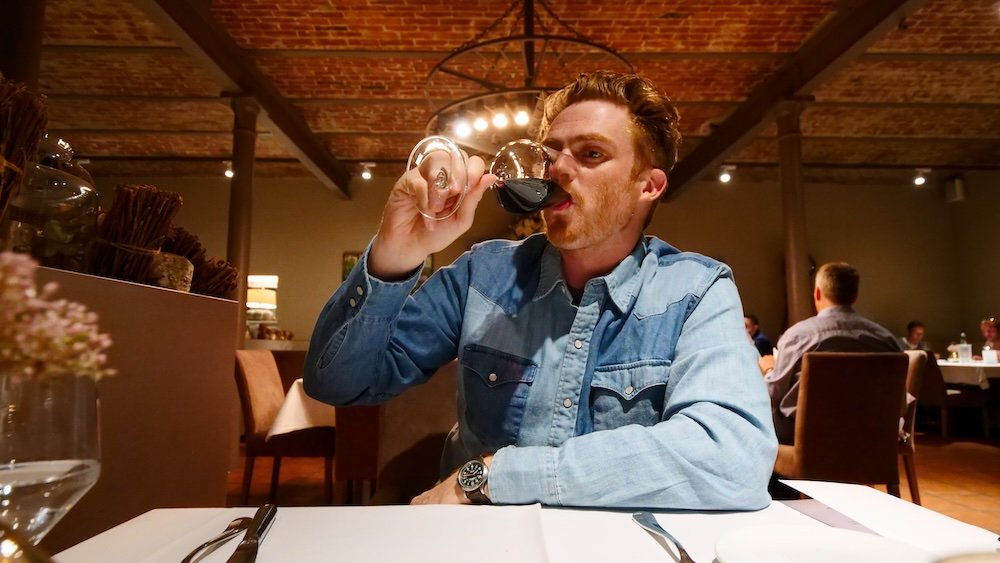
What To Eat and Drink in Quedlinburg, Germany
Food is a window into local culture, and Quedlinburg’s culinary scene doesn’t disappoint. From savory classics to sweet temptations, you’ll find plenty of things to do for your taste buds here.
Traditional German Fare
Traditional German cuisine is hearty, flavorful, and often steeped in history. Schnitzel—thinly pounded and breaded meat—is a crowd favorite. Pair it with Bratkartoffeln (fried potatoes) or Spätzle (soft egg noodles) for an authentic touch. Sauerbraten—a sweet and sour pot roast—also makes a frequent appearance on menus. Expect tangy gravies, slow-cooked meats, and a comfortable sense of familiarity on your plate. These dishes are comforting in colder months, but they’re enjoyed year-round by locals who love their hearty classics.
Tip: Look for seasonal menus that incorporate fresh produce like asparagus in spring or mushrooms in autumn.
Local Specialties
Quedlinburg has regional treats that you won’t find everywhere. Quedlinburger Bulle is a type of pastry stuffed with sweet or savory fillings. Some bakeries also offer Quedlinburger Baumschinken, a ham-based specialty cooked with local herbs. Stroll through the main square early to see what bakeries are offering that day. You’ll discover that local producers take immense pride in using high-quality, often locally sourced ingredients. These smaller, unique bites add a fun twist to your gastronomic journey.
Tip: Ask shopkeepers about the story behind these specialties; they often have fascinating origins tied to local folklore.
Cafés and Bakeries
Cafés are a big deal in Quedlinburg. They serve up robust coffee, a variety of teas, and baked goods that can melt your heart. Cakes and pastries are an art form here, often featuring fruits like apple or cherry, depending on the season. Many cafés provide outdoor seating, which is perfect for people-watching. You can take a midday break, recharge your energy, and plan out your next set of things to do. Trust me, sipping a hot drink amid medieval architecture is an unforgettable experience.
Tip: Pair your coffee with a slice of Streuselkuchen—a crumbly, sweet cake that’s incredibly popular in this region.
Beer and Wine
Germany is synonymous with beer, and Quedlinburg is no exception. Brewpubs and beer gardens may pop up, where you can taste Pilsners, Weizens, or even craft beers if you’re lucky. For wine lovers, the nearby Harz region occasionally produces small batches of wine, though it’s less common. You’ll mainly find an array of German wines like Riesling on local menus. Each sip tells a story of tradition and terroir.
Tip: If you visit a brewery, don’t be shy about trying seasonal brews or asking for pairing recommendations.
International Influences
Though German fare dominates, Quedlinburg welcomes international flavors. You’ll spot Italian trattorias, Turkish eateries, and even Asian fusion spots if you look carefully. This variety is perfect for travelers craving something beyond schnitzels and sausages. It also reflects the town’s evolving culinary landscape, blending old and new. That said, local restaurants still stand out as the best place to immerse yourself in Quedlinburg’s gastronomic heritage.
Tip: Diversify your food experience by mixing in both traditional German meals and international dishes for broader insight into the area’s palate.
Dietary Considerations
Vegetarians and vegans can find options, though they might be more limited than in big cities. Many cafes offer salads, soups, or veggie-friendly sandwiches. It’s always wise to check menus online if you have specific dietary needs. Local markets can be a treasure trove for fresh fruits, vegetables, and artisanal breads. Planning ahead ensures you won’t go hungry.
Tip: When in doubt, communicate your dietary preferences—most staff are accommodating and happy to help.
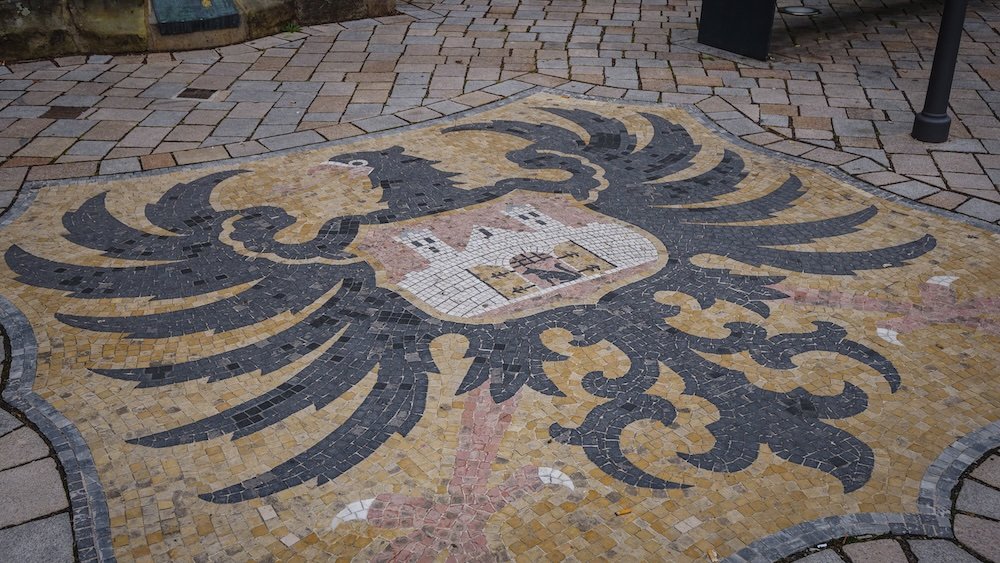
Tours For Visitors To Quedlinburg, Germany
Tours can elevate your visit by unveiling hidden corners, local lore, and special perspectives you might not discover on your own. Below is a quick guide to help you decide which Quedlinburg tours align best with your preferences.
Historical City Tours
Guided historical tours dive into Quedlinburg’s medieval and Renaissance past. Local experts lead you through winding streets, pointing out half-timbered houses and remnants of ancient fortifications. You’ll hear stories about influential families, religious shifts, and cultural milestones that shaped the town. These tours often last around two hours, though longer ones may include museum stops. It’s a fantastic way to get context for the architecture and daily life of the past. Most importantly, you’ll feel more connected to the places you’re exploring.
Highlights:
- Stops: Major landmarks like the Town Hall, churches, and hidden alleys.
- Time Frame: Often offered multiple times a day in high season.
- Extras: Some tours include audio devices for clearer commentary in busier areas.
Tip: Book in advance during weekends or holidays to secure a spot.
Architectural Focus Tours
For those fascinated by design and structure, architectural tours offer a deep dive into half-timbered building methods and styles. Guides might take you to lesser-known neighborhoods, explaining how construction techniques evolved over centuries. You’ll learn to identify periods based on decorative elements like carved beams or intricate door frames. These tours can be more niche, so group sizes are often smaller. The result is a more intimate experience, which allows for plenty of questions. It’s a feast for the eyes and a treasure trove for architecture buffs.
Highlights:
- Unique Structures: Visit rare examples of transitional styles.
- Historic Context: Understand how events like the Reformation impacted building trends.
- Interactive: Some guides provide old photographs or diagrams.
Tip: Wear comfortable shoes; you might cover a lot of ground when focusing on numerous buildings.
Food and Drink Tours
If you’re a culinary explorer, food and drink tours can be a delicious way to experience Quedlinburg. These guided strolls often include stops at local bakeries, family-run restaurants, or even a small brewery. You’ll sample a range of traditional dishes, sweets, and possibly a beer or two if that’s on the agenda. Along the way, the guide shares stories about local ingredients, cooking traditions, and the modern twists that chefs are introducing. By the end, you’ll not only have a satisfied palate but also a deeper understanding of regional cuisine.
Highlights:
- Tastings: From savory to sweet, a broad sampling of local fare.
- Local Stories: Learn the origins of dishes unique to Quedlinburg.
- Group Bonding: Food tours can be social, helping you meet like-minded travelers.
Tip: Check dietary restrictions ahead of time; many tours can accommodate vegetarian or other needs if you inform them early.
Natural and Outskirts Tours
Beyond the medieval streets, Quedlinburg is surrounded by idyllic landscapes. Nature tours might involve hiking or biking through the Harz foothills, exploring small neighboring villages, or even birdwatching along the River Bode. Guides point out local flora, fauna, and geological features you’d otherwise overlook. This is a perfect option if you want to experience fresh air and scenic views, far from the hustle of the main town center. It broadens your perspective, showing you that Quedlinburg is more than just a historical enclave.
Highlights:
- Routes: Varied difficulty levels, from easy walks to more challenging hikes.
- Scenic Stops: Panoramic viewpoints, vineyards, and wildlife sightings.
- Flexibility: Some tours can be customized for private groups.
Tip: Bring water and snacks, especially for longer outdoor tours.
Cultural and Festival Tours
If you’re lucky enough to visit Quedlinburg during a festival—like the Christmas Market—some operators offer cultural-focused tours that include event highlights. You’ll learn the background of local celebrations and take part in traditional rituals or performances. These tours provide a seasonal flair, making them feel extra special. You’ll also get the inside scoop on local customs, which can deepen your appreciation for the region’s communal spirit. It’s a blend of sightseeing and authentic cultural immersion.
Highlights:
- Festival-Specific: Activities like candlelit processions, folk dancing, or special market tours.
- Limited Availability: Often only available during particular months.
- Unique Souvenirs: Handcrafted items tied to festive traditions.
Tip: Ask about special passes that might bundle festival entrance with guided experiences at a discounted rate.
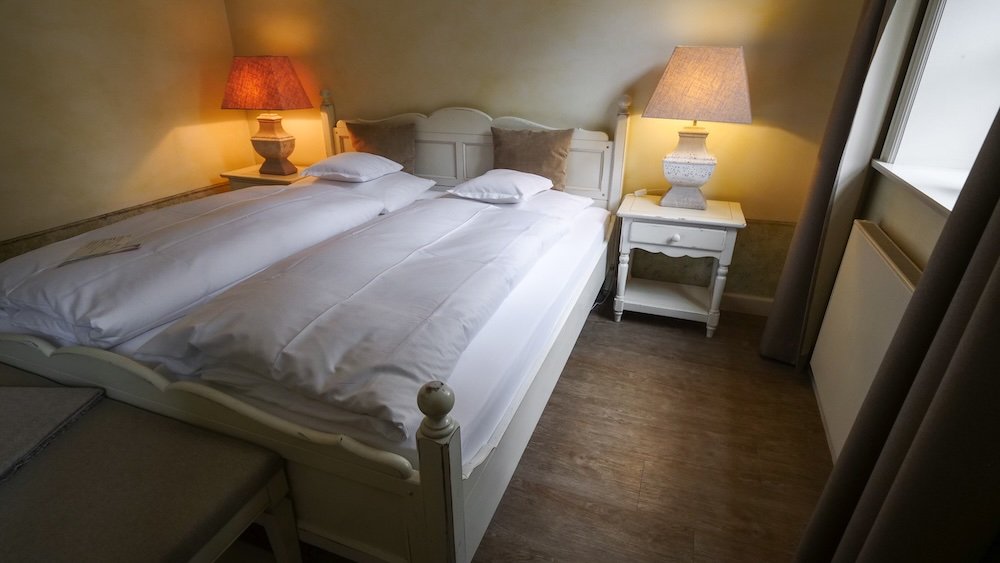
Quedlinburg Accommodations Guide: Hotels, Guesthouses and Hostels
Finding the right place to stay can make or break your trip. Here’s a rundown of what to expect.
Hotels
Hotels in Quedlinburg range from luxurious boutique properties in historic buildings to more modern establishments on the outskirts. Many of the upscale options are centrally located, putting top things to do within walking distance. Interiors often blend modern comforts with medieval charm—think exposed beams, antique decor, and a sprinkling of luxury amenities. On-site restaurants sometimes feature regional dishes or international fare. While these hotels can be pricier, the convenience and ambiance often justify the cost. If you enjoy a touch of elegance and prefer seamless service, consider booking a hotel in Old Town.
Key Points:
- Location Matters: Closer to Old Town means higher rates but unbeatable convenience.
- Amenities: Some offer spa services, room service, and guided city tours.
- Booking Tip: Reserve well in advance during peak seasons to secure your ideal room.
Tip: Ask about parking if you’re driving, as historic streets can be narrow and public spots fill up quickly.
Guesthouses
If you crave something more personal, guesthouses—or Pensionen—are a fantastic choice. These family-run spots let you immerse yourself in local culture. Guests often enjoy homemade breakfasts featuring regional produce and friendly hosts who double as informal tour guides. Rooms might be simpler than a hotel’s, but they’re typically cozy and well-maintained. Quedlinburg’s architecture lends these guesthouses a unique character, with timber-framed structures and intimate courtyards. You’ll sense genuine warmth as soon as you step inside.
Key Points:
- Cost: More wallet-friendly than hotels, generally speaking.
- Interactions: Expect personal touches like morning chats with the owner.
- Atmosphere: Laid-back, homey vibe that’s perfect for slow-paced vacations.
Tip: Check for multilingual hosts if you’re concerned about language barriers; many speak basic English.
Hostels
Hostels provide an economical and social option, particularly for backpackers or solo travelers. While Quedlinburg doesn’t have a huge number of hostels, the ones available often feature shared dorms as well as private rooms. Communal kitchens and lounges make it easy to meet fellow travelers. Staying here can feel like joining a mini community, especially if you’re keen on swapping travel stories and tips. This is also a smart choice if you’re focusing on budget-friendly things to do or plan to spend most of your time exploring rather than lounging in your accommodation.
Key Points:
- Vibe: Casual, communal, and ideal for younger or budget-conscious travelers.
- Facilities: Basic but functional; lockers, shared bathrooms, and sometimes laundry services.
- Location: May be slightly outside the main tourist area but still relatively accessible.
Tip: Bring earplugs if you’re staying in a dorm-style room to ensure a good night’s sleep.
Booking Tips
Regardless of which accommodation type you choose, booking ahead is crucial, especially during peak travel seasons or festivals like the Christmas Market. Consider reading reviews on reputable platforms to confirm cleanliness, service quality, and location details. Look for packages that include breakfast or discounted entries to local attractions. If you’re traveling by car, make sure to ask about parking availability.
Key Points:
- Reviews: They offer firsthand insights from previous guests.
- Seasonal Rates: Prices can soar during popular events or summer vacations.
- Refund Policies: Opt for flexible bookings if your travel dates aren’t set in stone.
Tip: Explore official tourism websites; they sometimes feature special deals or lesser-known accommodations.
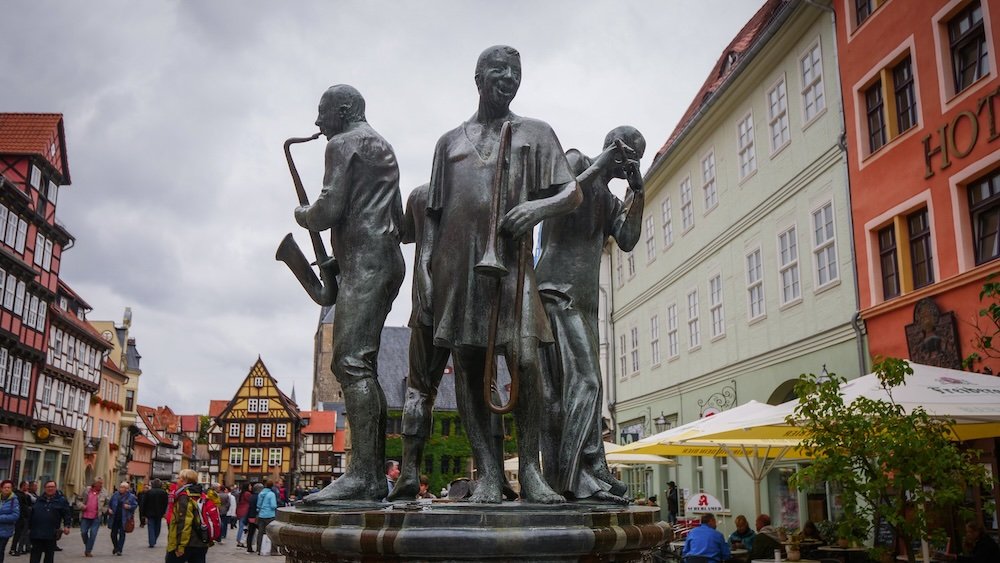
Day Trips From Quedlinburg, Germany
Here are some top day trip ideas to help you broaden your adventure.
1. Wernigerode
A short train or bus ride from Quedlinburg, Wernigerode is famed for its colorful half-timbered homes and majestic castle. The Wernigerode Castle sits atop a hill, offering sweeping views of the town below. Explore the medieval streets, visit the local museums, or indulge in hearty German fare at a traditional tavern. The vibe is similar to Quedlinburg, but each city has its own distinct charm. If you love architecture, you’ll find it fascinating how these two Harz region towns compare. An easy half-day or full-day trip, depending on your pace.
Highlights:
- Transport: Frequent train connections from Quedlinburg.
- Must-See: Wernigerode Castle’s interior and gardens.
- Photo Spot: The Marktplatz, framed by mountains in the distance.
Tip: Bring your camera, as the views from the castle are postcard-perfect.
2. Goslar
Goslar is another UNESCO World Heritage town within the Harz region, celebrated for its imperial past and well-preserved Old Town. The Imperial Palace of Goslar is a highlight, showcasing centuries of royal history. Stroll around cobbled streets to discover hidden courtyards, artisan shops, and centuries-old churches. Goslar also offers a vibrant restaurant scene, serving everything from traditional German fare to modern fusion. If you’re interested in mining heritage, the nearby Rammelsberg Mine is a must-visit. Plan for a full day if you want to cover both the palace and the mine.
Highlights:
- Architecture: Ornate facades and patrician houses.
- Cultural Events: Seasonal festivals and Christmas markets.
- Easy Access: Direct train routes from Quedlinburg or a scenic drive.
Tip: Wear comfortable shoes—Goslar’s inclined streets can be surprisingly steep.
3. Harz National Park
For nature enthusiasts, a trip to Harz National Park offers pristine forests, rugged trails, and a chance to see local wildlife. This expansive park stretches across multiple towns, so plan your route in advance. Hiking and mountain biking are popular activities, with trails ranging from easy strolls to challenging treks. Keep an eye out for wild deer or the elusive lynx, a species reintroduced to the Harz region. In winter, the area transforms into a snowy wonderland for cross-country skiing. It’s a perfect contrast to Quedlinburg’s urban charm.
Highlights:
- Brocken Mountain: The highest peak in the Harz, accessible by steam train.
- Scenic Views: Panoramic vistas, especially in autumn when leaves change color.
- Visitor Centers: Helpful for maps, trail info, and local tips.
Tip: Dress in layers as mountain weather can shift quickly, even in warmer months.
4. Thale and the Bode Gorge
Thale is a gateway to the dramatic Bode Gorge, where steep cliffs, rushing water, and dense forests create a fairytale-like setting. Cable cars whisk you up to lookout points, offering panoramic views of the gorge. If you’re an adrenaline junkie, the area boasts a summer toboggan run, zip lines, and other outdoor attractions. A short but scenic ride from Quedlinburg, Thale provides a refreshing dose of nature and excitement. You can combine a stroll through the gorge with a hearty meal at a rustic cabin eatery.
Highlights:
- Cable Car Rides: Stunning aerial views of the gorge and surrounding hills.
- Hiking Trails: Various difficulty levels; something for everyone.
- Family Fun: Adventure playgrounds and fun rides for kids.
Tip: Arrive early to avoid long queues for cable cars on sunny weekends.
5. Bad Suderode and Gernrode
Located a short distance from Quedlinburg, Bad Suderode and Gernrode are known for their spa culture and historical sites. Bad Suderode’s mineral-rich springs make it a go-to spot for relaxation. Meanwhile, Gernrode features the Stiftskirche St. Cyriakus, a rare example of early Ottonian architecture. These smaller towns are ideal for a laid-back day trip if you’ve already explored the main attractions in Quedlinburg. Meander through quiet streets, learn a bit of regional history, and treat yourself to a spa session if you’re feeling indulgent.
Highlights:
- Spa Treatments: Mineral baths, massages, and wellness programs.
- Architectural Gem: The ancient St. Cyriakus church in Gernrode.
- Local Atmosphere: Fewer tourists, offering a more authentic vibe.
Tip: Combine both towns for a full day: morning spa in Bad Suderode, afternoon heritage exploration in Gernrode.
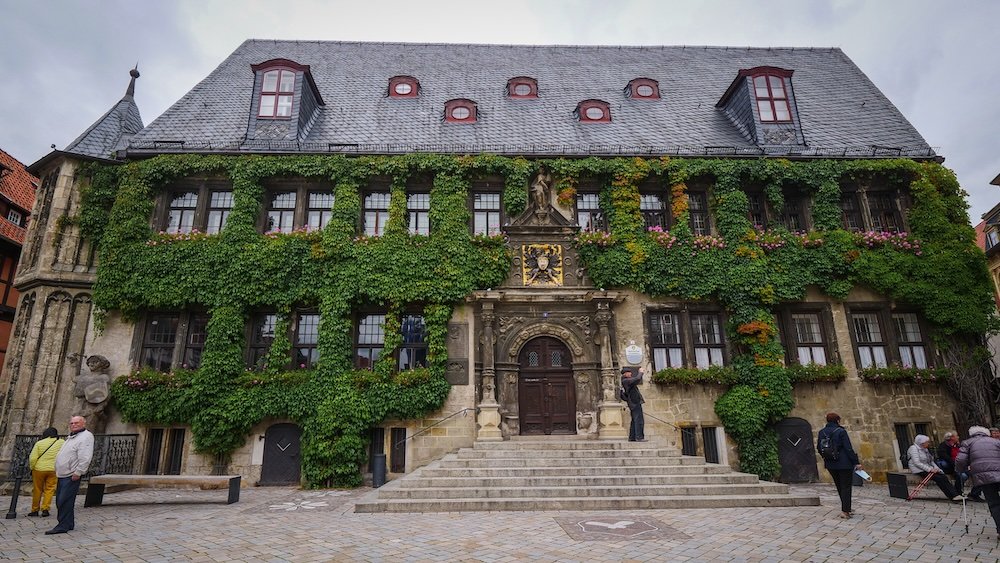
Quedlinburg Transportation Guide
Getting around Quedlinburg—and to nearby spots—is easier than you might think. This transportation guide will help you navigate the local infrastructure, ensuring your trip remains smooth and stress-free. Whether you’re traveling by train, car, or foot, here’s what you need to know about Quedlinburg’s mobility options.
By Train
Trains are a primary mode of transportation for many travelers in Germany. Quedlinburg Railway Station connects you to regional lines and some intercity routes, making it convenient to visit places like Wernigerode, Halberstadt, or Magdeburg. Timetables are generally reliable, and stations usually have English signage for easy navigation. Tickets can be purchased online, at kiosks, or through a mobile app if you prefer digital convenience. This option is perfect if you’re planning day trips and want a hassle-free ride. It’s also a greener choice compared to driving.
Key Points:
- Regional Passes: Look into day tickets that allow unlimited travel in certain zones.
- Peak Times: Trains can get busy during rush hour or festival seasons.
- Station Facilities: Small shops and restrooms are typically available.
Tip: Validate your ticket before boarding if it’s not already time-stamped—fines are hefty otherwise.
By Bus
Local bus services provide connections within Quedlinburg and to surrounding villages. While buses may not run as frequently as in major cities, they’re still a viable option for short distances. They usually stop at key points like the market square, railway station, and other central locations. If you’re unfamiliar with the routes, check the local transportation website or pick up a printed schedule from tourist information centers. Keep smaller change on hand, as not all buses accept cards.
Key Points:
- Schedules: Often aligned with train timetables to aid intermodal connections.
- Route Coverage: May not reach every remote spot, but good for suburban areas.
- Accessibility: Many buses now feature low-floor designs for easier boarding.
Tip: Double-check Sunday schedules—service can be reduced on weekends and public holidays.
By Car
If you prefer flexibility, renting a car gives you complete control over your itinerary. Quedlinburg’s central location makes it a great base for exploring the broader Harz region. However, be prepared for narrow medieval streets in the Old Town. Parking can be limited and often requires a fee. Some hotels provide guest parking, but always inquire in advance. Driving is straightforward once you’re out of the historic center, and Germany’s road network is well-maintained.
Key Points:
- Rental Agencies: Available in nearby cities; check operating hours.
- Navigation: GPS or apps like Google Maps are essential for rural areas.
- Fuel: Gasoline stations might be scarce in more remote locales.
Tip: Park outside the old city center and walk in to avoid tight streets and limited parking options.
By Bike
Quedlinburg’s scenic surroundings and relatively flat terrain make cycling a wonderful option. Some local shops and hotels rent bikes daily or by the hour. Bike lanes are present but can be inconsistent, especially in older parts of town. Nevertheless, many side streets are quiet, making your ride safer and more enjoyable. If you plan to visit the countryside, a bike can serve as both transportation and a way to soak up the picturesque landscapes at your own pace.
Key Points:
- Safety Gear: Helmets aren’t mandatory for adults but are highly recommended.
- Lock Up: Use a secure lock; petty theft isn’t rampant, but caution is wise.
- Weather: Carry a light rain jacket, as weather can be unpredictable.
Tip: Plan your route to avoid steep inclines; certain areas heading into the Harz can be demanding.
On Foot
The Old Town is best explored on foot, given its compact size and traffic-restricted zones. Wandering the cobblestone streets lets you appreciate the half-timbered buildings and charming alleys at a leisurely pace. Plus, you’ll stumble upon hidden gems—like small courtyards or local boutiques—that you might miss otherwise. Walking is ideal for short distances within Quedlinburg, though you might need other transport for day trips.
Key Points:
- Comfort: Wear supportive shoes; cobblestones can be uneven.
- Navigation: Grab a map from the tourist office if you worry about getting lost.
- Pace: Budget extra time; each corner might tempt you to stop for photos.
Tip: Explore early in the morning to avoid crowds and catch the golden light for photographs.
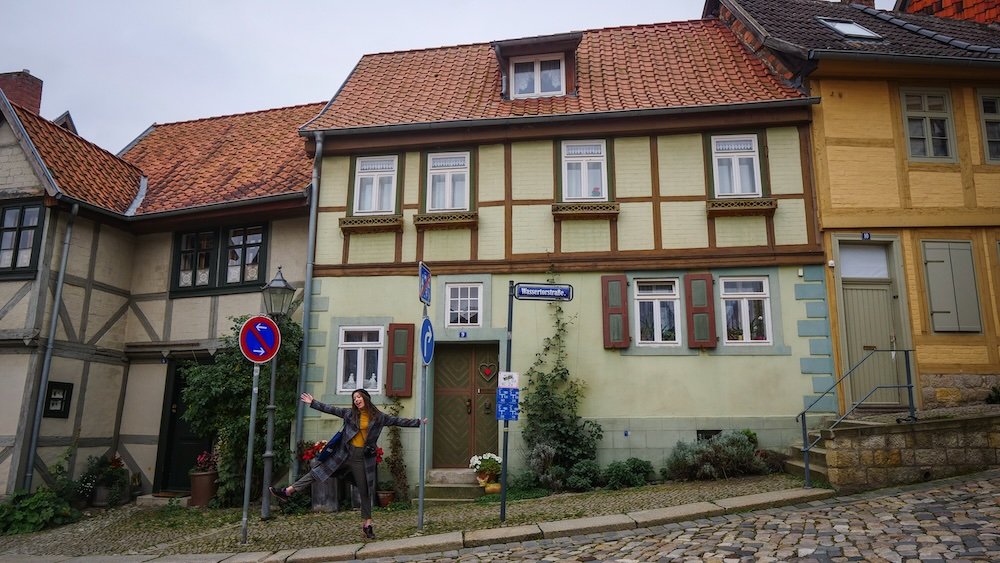
Quedlinburg Travel Guide: Final Thoughts
As you wrap up your journey in Quedlinburg, it’s clear that this town is much more than just a historic destination. From wandering the Old Town to venturing out on day trips, your itinerary can be as jam-packed or leisurely as you like.
Maybe you started with big plans—to see every museum, try local beers, and join specialized tours. Now that you’re nearing the end of your stay, you’ve probably noticed how Quedlinburg encourages a slower pace. Even with a well-structured travel guide in hand, part of the charm is leaving room for spontaneous discoveries. Whether you stumbled upon a tiny café or found a scenic spot in the Castle Garden, these small moments define your trip.
Practical Tips for Future Visitors
- Book Ahead: Quedlinburg is popular, so accommodations can fill up quickly during peak seasons or festivals.
- Layer Up: The weather can be unpredictable, especially near the Harz mountains.
- Talk to Locals: Don’t be shy about asking for recommendations. Residents often know the best-kept secrets.
- Take a Tour: Whether it’s architecture, history, or food-focused, a guided experience adds depth to your trip.
Looking Beyond Quedlinburg
If you’re tempted to explore further, the Harz region is rich with additional things to do. Places like Wernigerode, Goslar, and Harz National Park are a short ride away. These destinations expand your cultural and natural horizons, offering more reasons to extend your stay. Quedlinburg makes a great base camp for these adventures, thanks to its central location and well-linked transportation options.
